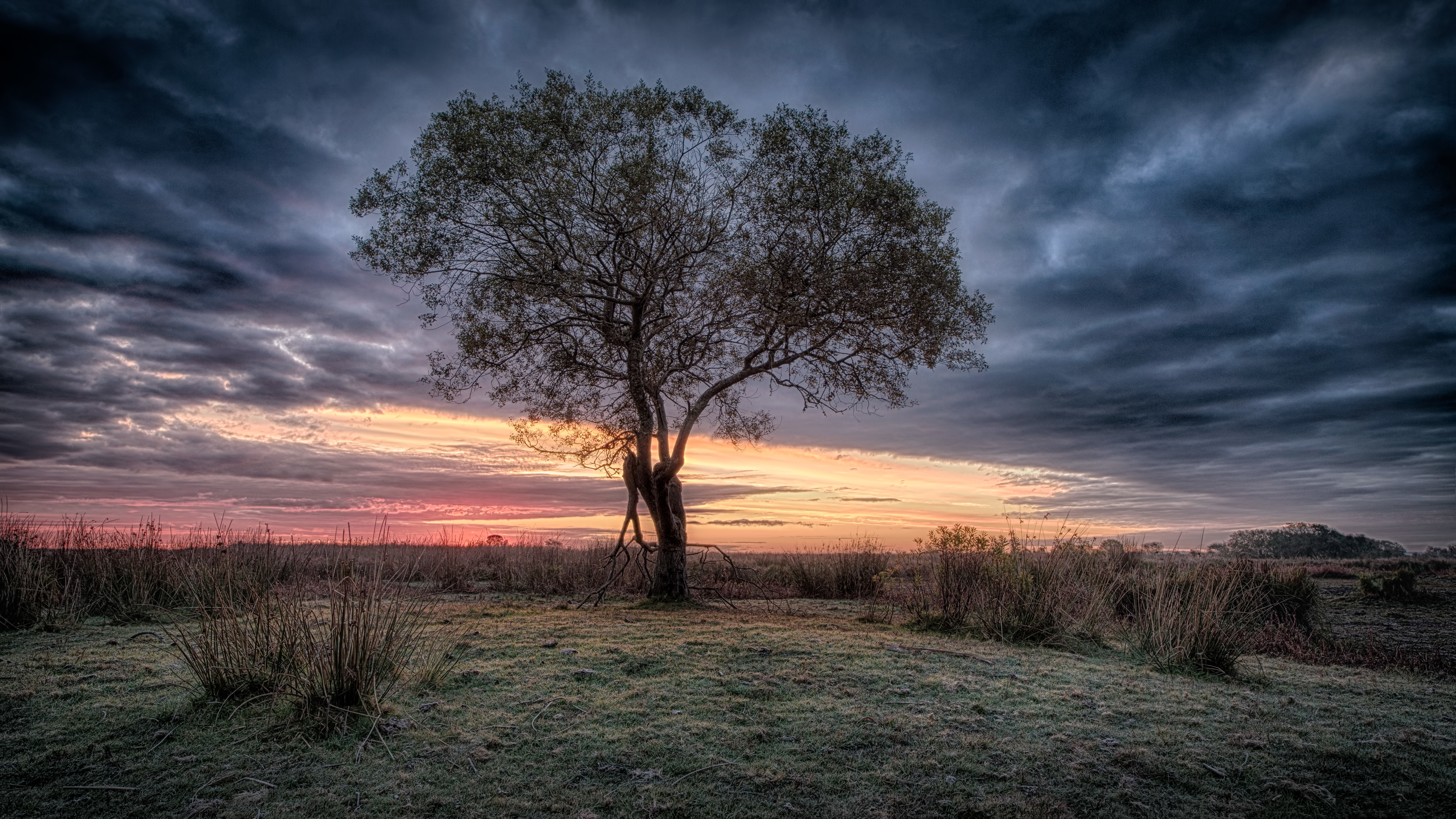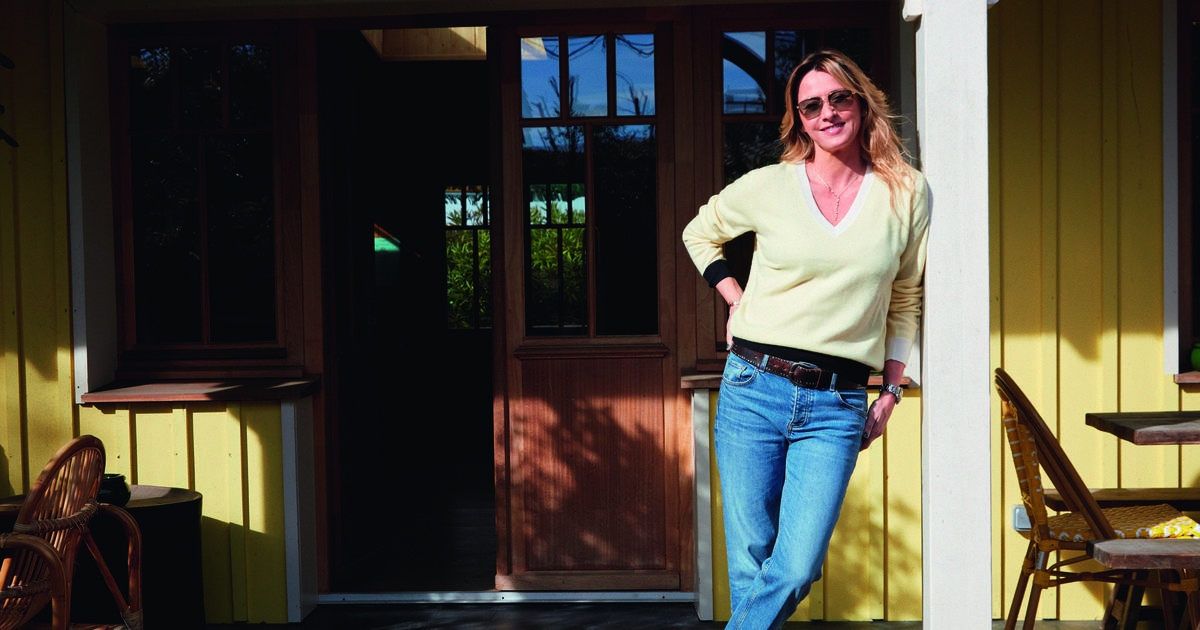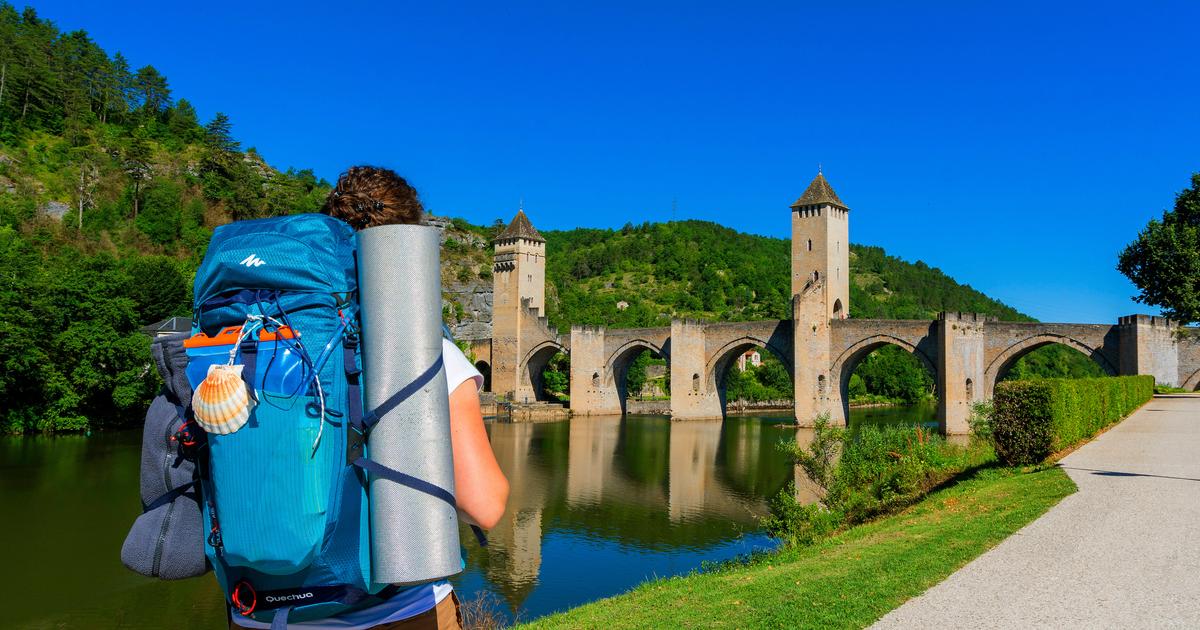The Brière marsh (Loire-Atlantique)
It is a secret, a country of water all shrouded in silence. North of the Loire estuary, the Grande Brière spreads its ponds, peat bogs and reed beds over more than 40,000 hectares. "Like a wild meadow half flooded, the Grande-Brière stretched out to the horizon with its tall, shivering grass," wrote Marcel Schwob. On this vast bog crisscrossed with canals (the "curées") and shallow bodies of water (the "piardes" and the "copis"), one does not move: one slides. Barges or "blins" (traditional boat with a flat bottom) take you on the edge of the water, along banks sown with undulating reeds, yellow irises and white water lilies. These aquatic strolls are conducive to daydreaming. We may well get lost in this labyrinth of waterways, and that's good. Sooner or later, we will come across one of the seven islands which are home to a hamlet or a village of thatched cottages. The Brièles have long lived in quasi-autarchy on this territory apart, which they share with herons, harriers of reeds and chickadees with whiskers. Saint-Nazaire and La Baule, a stone's throw from here, have never seemed so far.
The Chausey Islands (Manche)
The Norman archipelago of Chausey, in the Manche, deserves to be sailed there during the high tides. Valery Hache / AFP
At high tide, the Chausey archipelago has 52 islands. At low tide, there are 365! Fifteen meters of tidal range, you discover an entire continent. It is therefore a world in perpetual creation that we discover over the hours, before the sea comes to take possession of the place. After an hour of sailing from Granville, we silently embark on a channel called Sound. We land at Grande-Île, the only inhabited land in the Norman archipelago, before setting off to explore the maze of water and granite, mud flats and sands, “grunes” (rocks exposed at low tide) and shoals. Chausey is a wireless labyrinth of Ariadne, a granite lace with countless interlacing. Blue lobsters swarm in these waters stirred by violent currents, but warmed by the Gulf Stream. Here and there we discover small turquoise lagoons with halos from overseas. At high low tides, we come to pick the best prairies, clams and oil cakes in the world. We would like to anchor for a long time, but we don't do it. So we come back, again and again.
Read also: Discover Chausey during a tide
The rock of Tombelaine (Manche)
Tombelaine is an ornithological reserve. Jean-Sébastien Evrard / AFP
It is an island of three hectares in the heart of the bay of Mont-Saint-Michel ... and it is not Mont-Saint-Michel. The Rock of Tombelaine has no abbey, nor Mother Poulard, and it is precisely for this reason that pilgrims and visitors often ignore it. On the contrary, let's take the opportunity to discover the wonders of the bay far from the crowd. At the start of the Andaine beak, the low tide leaves us free rein. The play of water and sand draws interlacing and silver scrolls as far as the eye can see. Here and there, we cross erratic streams and shifting sandbanks. Tombelaine is in sight. The most Breton legends surround the granite rock, covered with brambles and privet. Victor Hugo saw there the tomb of Beelzebub, struck down by Saint Michel, the angel of the country. Tombelaine would also be the "tomb of Hélène", daughter of the Breton king Hoël. A cursed island three kilometers from the sacred rock ... We dream better of these myths from the highest point of the islet, called Pic de la Folie (45 meters above sea level).
Tombelaine is an ornithological reserve. Due to nesting, it is closed to the public from March 15 to July 31.
Retreat at Solesmes Abbey (Sarthe)
The Saint-Pierre-de-Solesmes abbey stands out as a fortified castle on the banks of the Sarthe. Press photo Saint-Pierre-de-Solesmes Abbey
Between Le Mans and Angers, the Saint-Pierre-de-Solesmes Abbey draws its silhouette of a fortified castle on the banks of the Sarthe. It was here that the Benedictine order was raised (in the 19th century) and that the sources of Gregorian chant were found. The monastic community has made the rule of Saint Benedict its own and receives "like Christ" the hosts who, believers or not, wish to recharge their batteries, deepen their faith, enjoy the silence, reflect on themselves, alone or with help of a monk. The hotel, closed, welcomes only men, in silence. Women and families can stay in houses in the village belonging to the monks. Everyone can participate in the prayer of the community. From lauds to vespers, the hours of the day go by like pearls in a rosary. Enveloped by the beauty of Gregorian chants, we believe we have gone back a thousand years. A parenthesis of peace and meditation. Those who wish can also do manual labor or wander around.
Saint-Pierre-de-Solesmes Abbey. 02 43 95 03 08; www.abbayedesolesmes.fr
The fisheries of the Jade coast (Loire-Atlantique)
The Jade Coast fisheries are private, but some are rented at the tide in Plaine-sur-Mer and Préfailles. The Breton Fountain
On the Jade coast, between the Loire estuary and the Breton marsh, the sea has a taste of Muscadet - the one you drink in your fishery facing the Atlantic. Wooden huts mounted on stilts, the fisheries evoke slender dragonflies at the end of their booms. You don't have to be a fan of plaice fishing to have a good time. A few meters above the water, detached from the mainland, lulled by the chop of the waves, you feel like at the bow of a motionless sailboat. The breeze sometimes slightly vibrates the wooden structure while we contemplate the changes of light on the water, sand and mud. An impressionist would like to paint the nuances of this painting in perpetual movement. From time to time, we crank up the net where, at the whim of the tides, a small bar, mules, some anchovies, sometimes an eel and sometimes shrimp are stirred ... A Loire wine is used to celebrate fishing (almost ) miraculous. In late summer, the sunset makes the horizon glow over Noirmoutier. And all intoxicated with freedom (and a little muscadet), we still don't know if we are on land or at sea…
The fisheries of the Jade Coast are private, but some are rented at the tide in Plaine-sur-Mer and Préfailles; others, like those of Pornic, can be visited ( www.ot-pornic.fr ).
The esta ria and Saint-Cado (Morbihan)
The former home of the keeper of the oyster parks of Saint-Cado. Loïc Venance / AFP
Not far from the bustle of the Gulf of Morbihan, the ria of Etel (or river of Etel) offers a peaceful stopover at the countless refuges. Between Vannes and Lorient, this small inland sea with multiple arms, dotted with islets, is formed by the meeting of the waters of the Etel and the Atlantic. At rising tide, the ocean invades the upper valley. The sky and the water then divide the landscape in two. Sometimes a bit of land sneaks in: this is the case of the small island of Saint-Cado, which a stone bridge connects to the mainland. A handful of houses topped with slate and a Romanesque chapel are waiting to be swallowed up one day. A few armies away, a shack with blue shutters seems to float on the water. It is the former home of the keeper of the oyster parks of Saint-Cado. The Robinson is gone, and the lichen is now gnawing on the roof of this strange shell hanging on its rock. Local oysters are still famous. In this bay where the water slides and slides in a perpetual back-and-forth, you must slide in turn, preferably by canoe-kayak or paddle. Or paint with watercolors ... the one that nature creates every day before our eyes.
The islands of Houat and Hoëdic (Morbihan)
It is on foot that one travels the island of Houat. Jean-Sébastien Evrard / AFP
They are two wild sisters, two rebellious girls from Morbihan (emancipated from the Quiberon peninsula since the Mesolithic), but never angry with each other since we never mention one without citing the other. We walk through Houat (the "duck" in Breton), its coast cut out by turquoise coves, sandy beaches (the amazing convex beach of En Tal) and rocky peaks. The paths run through a colorful moor where gorse and ferns thrive, and end in the dunes dotted with seagrass ... The pedestrian path that goes around the island offers 15 kilometers of ocean escape. Sweeter, Hoëdic (the "duckling"), two square kilometers and zero car, looks like its big sister like two drops of water: a fragrant moor scented with maritime lilies, a mild temperature and fine sand bordered by water as fresh as clear. We come from the continent on these two almost virgin lands to stroll and dream to the rhythm of the tides.
The Sparkling Forest, Perche (Eure-et-Loir)
La Ferté-Vidame, moist forest of sparkling wines. CDT 28
Very close to the ruined castle of Saint-Simon, this humid forest of ten hectares plunges us into an atmosphere of dark, wild romanticism. A world of alders, willows and birches, sometimes standing, sometimes half collapsed on themselves, emerges from black stagnant water, charged with mystery. We think of a Louisiana bayou in the middle of the Perche, a Norman mangrove ... Here and there, the sphagnum mosses of the peat bogs make bright green cushions where you would like to lay your head. In March, willow pollens dot the surface of the water with an elegant white sheet. The inextricable tangle of dying trees traps sounds, so that you quickly feel out of the world in this marshy cocoon where passerines, woodpeckers and tawny owls live. A 2 km course has been specially designed, partly on stilts so as not to get your feet wet.
The island of Molène (Finistère)
Molène is a small island in Finistère (Brittany) which has no more than 130 inhabitants in winter. It is located between Le Conquet and the island of Ouessant. Xavier Dubois / Brittany Tourism
Between Conquet and the island of Ouessant, we threw a few stones into the Iroise Sea. Molène, 1 km long and 800 meters wide, is one of those rocks that were delivered to the storms of the Celtic sea. We can no longer count the shipwrecks in the area: "Who sees Molene sees his pain", warns a Breton saying. We are still waiting for the adage that will pay homage to the pure and rough beauty of this flat island, surrounded by turquoise water in the sun, and black in the storm. Despite the almost daily shuttles from the Penn Ar BeD, despite the presence of around 200 inhabitants, one can believe oneself here alone in the world, forgotten among the clouds of seagulls and the seals. The high tides here discover unsuspected virgin lands, immense areas immediately called to be swallowed up. Each year, you can walk on the water between Triélen and Molène, 3.5 km apart. Molène has a scent of seaweed, an iodized taste (taste the smoked sausage with seaweed) and a little music of its own: that of the piano by Didier Squiban, whose album "Molène" makes a soundtrack all found to address the island.
Wild and spectacular, five good reasons to go to Ouessant Island
The slab of the deer in Sologne (Loir-et-Cher)
From September to October, THE star of the moment is the deer and its famous slab in Sologne. Alexandre Roubalay / Loire Valley 41
In mid-September, the king of the forest comes out of the woods, if you dare say. Invisible all year round, the rutting deer roams to build up its harem and repel its rivals. It is in Sologne, renowned for its large population of deer, that we observe this love parade best. We get up at dawn to enter the forest of oaks, chestnuts and Scots pines. We advance in silence, avoiding cracking the twigs and acorns. The slabs are already ringing as the sun rises on the broom heaths. The grazing light illuminates the birch trees with pale yellow leaves and the purple bouquets of gray heather. The mist veils this magical setting when suddenly, in the middle of a meadow beaded by dew, it is there, the glorious woods, surrounded by its hinds. At the cry that it releases, between the roar of the cow and the roar of a lion, a shiver runs through your spine ... A magical moment in the intimacy of the forest We advise to live the deer slab in a small group, accompanied of a guide, at dawn at dusk.
Sologne Nature Environment. This association offers trips to the deer roar in Sologne (by reservation). 02 54 76 27 18; www.sologne-nature.org
The Pink Granite Coast (Côtes d'Armor)
The pink granite coast at Ploumanac'h. Jacqueline Piriou / Brittany Tourism
From Trébeurden to Perros-Guirec, the Côtes d'Armor turns pink. One would think looking through a filter at this rough ribbon of about twenty kilometers, strewn with islets, reefs and rocky chaos. Erosion has polished wonderfully the pink granite rocks that crisscross into the sea. The work of a goldsmith, which can be appreciated all the better on foot, along the Douaniers path, between Ploumanac'h in Perros-Guirec. Here the rock garden takes on all appearances, and it is a game to find it a resemblance to an animal, a plant or the profile of a great man. Imagination escapes before this stone herbarium. In summer, the last rays of the sun ignite this fantastic setting. The Mean Ruz lighthouse (“red stone” in French) watches over this tricky coast for ships. Count 3 hours round trip from Ploumanac'h to Perros-Guirec (preferably in the morning; choose the end of the afternoon in the other direction).














